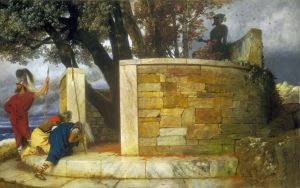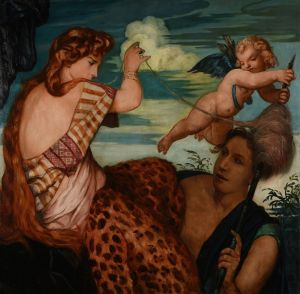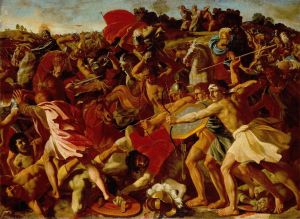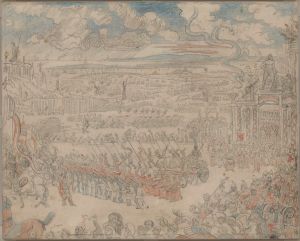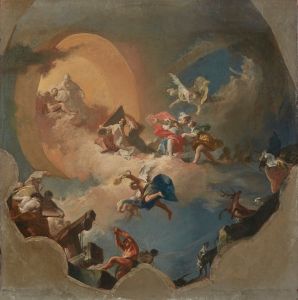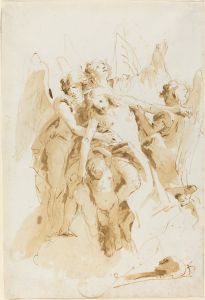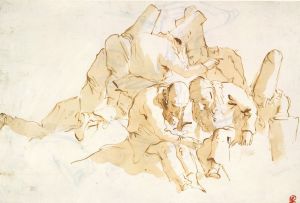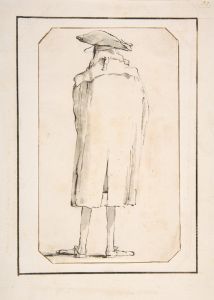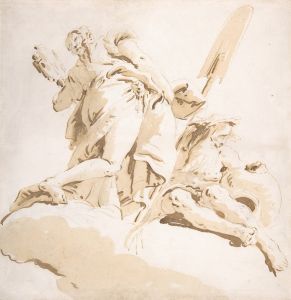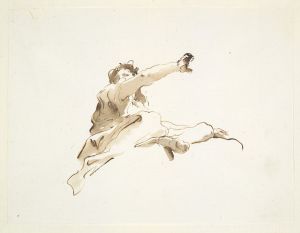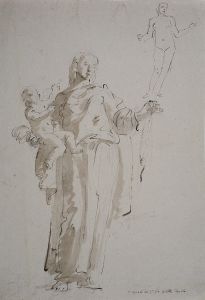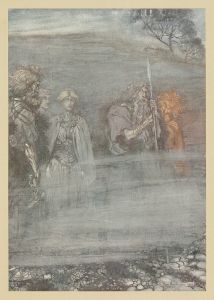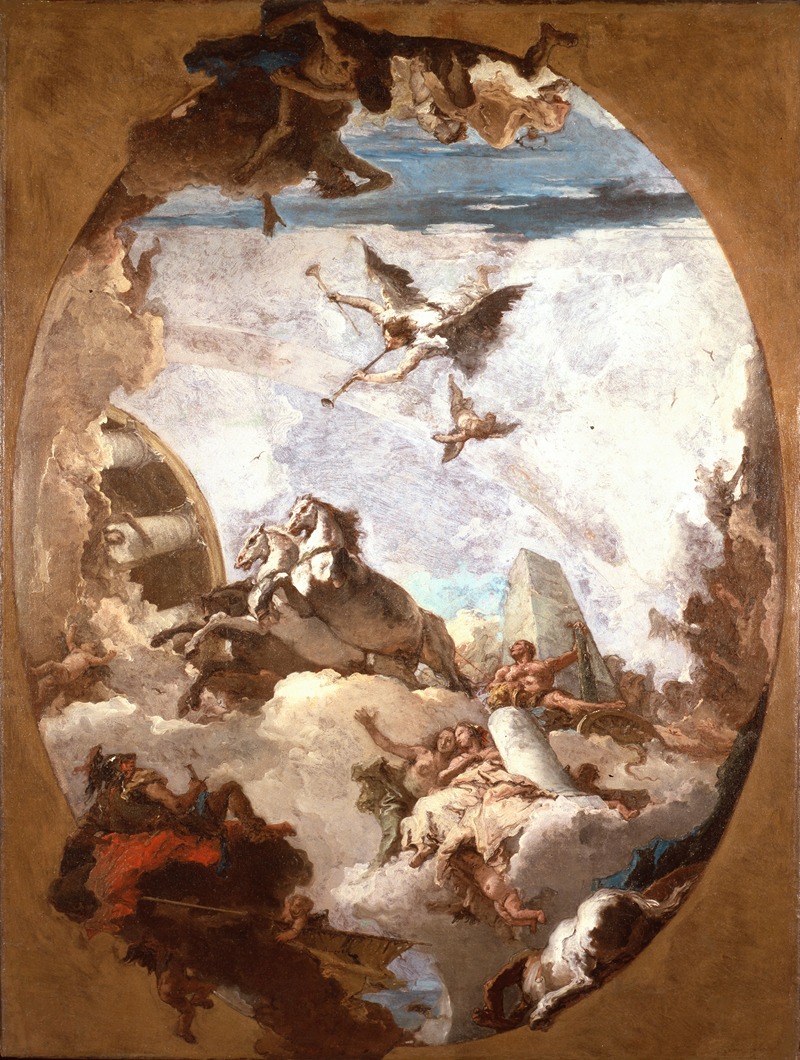
The Triumph of Hercules
A hand-painted replica of Giovanni Battista Tiepolo’s masterpiece The Triumph of Hercules, meticulously crafted by professional artists to capture the true essence of the original. Each piece is created with museum-quality canvas and rare mineral pigments, carefully painted by experienced artists with delicate brushstrokes and rich, layered colors to perfectly recreate the texture of the original artwork. Unlike machine-printed reproductions, this hand-painted version brings the painting to life, infused with the artist’s emotions and skill in every stroke. Whether for personal collection or home decoration, it instantly elevates the artistic atmosphere of any space.
Giovanni Battista Tiepolo's "The Triumph of Hercules" is a renowned fresco that exemplifies the grandeur and dynamism of 18th-century Venetian art. Tiepolo, an Italian painter born in 1696, was celebrated for his vibrant use of color and his ability to create compositions that were both dramatic and harmonious. His works often depicted historical, religious, and mythological themes, and "The Triumph of Hercules" is no exception.
This fresco was completed around 1731 and is part of a series of mythological paintings commissioned for the Palazzo Archinto in Milan. Unfortunately, the original frescoes were destroyed during World War II, but preparatory sketches and other related works provide insight into Tiepolo's vision and execution. The series was intended to adorn the ceilings of the palace, creating an immersive environment that celebrated the grandeur of classical mythology.
"The Triumph of Hercules" depicts the legendary hero Hercules, a figure from Greek and Roman mythology known for his strength and for completing the Twelve Labors. In this fresco, Tiepolo captures the moment of Hercules' apotheosis, or his ascent to Mount Olympus, where he is welcomed among the gods. The composition is dynamic, with Hercules depicted in a powerful stance, surrounded by a host of mythological figures who celebrate his achievements.
Tiepolo's use of color and light in "The Triumph of Hercules" is particularly noteworthy. He employs a palette of vibrant hues, with a strong emphasis on contrasts between light and shadow, to create a sense of movement and vitality. The figures are arranged in a swirling composition that draws the viewer's eye upward, enhancing the sense of elevation and divine ascension. This technique is characteristic of Tiepolo's style, which often sought to break the boundaries of the painted surface and engage the viewer in a theatrical experience.
The fresco also reflects the influence of the Baroque style, which was characterized by dramatic expressions, grandeur, and a sense of movement. Tiepolo, however, infused this style with a lightness and elegance that became a hallmark of his work. His ability to convey complex narratives with clarity and grace made him one of the most sought-after artists of his time, and his works were commissioned by patrons across Europe.
While the original frescoes of the Palazzo Archinto were lost, Tiepolo's legacy endures through his other works and the preparatory sketches that survived. These sketches provide valuable insights into his creative process and his approach to composition and color. They also serve as a testament to his skill in capturing the essence of mythological narratives and translating them into visual form.
In summary, "The Triumph of Hercules" by Giovanni Battista Tiepolo is a masterpiece of 18th-century art that exemplifies the artist's skill in depicting mythological themes with vibrancy and dynamism. Although the original fresco no longer exists, its impact and significance continue to be recognized through surviving sketches and the enduring influence of Tiepolo's artistic legacy.





